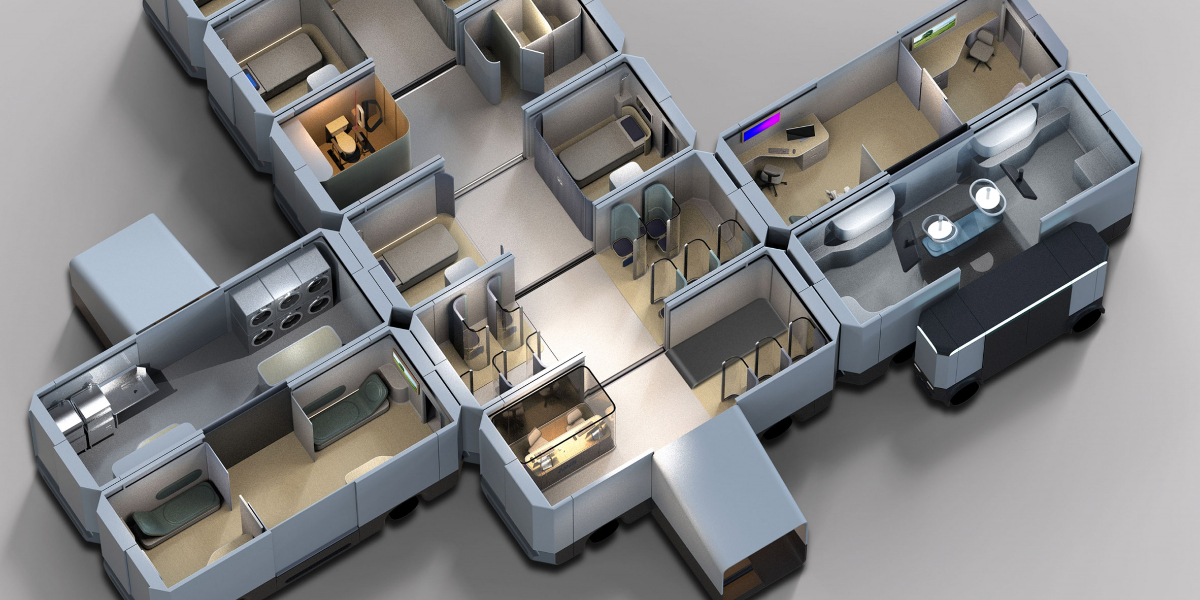AWARD YEAR
2023
CATEGORY
Work
GOALS
Good Health & Well-being, Industry, Innovation & Infrastructure
KEYWORDS
hospitals, healthcare, mobility, emergency services
COUNTRY
Australia
DESIGNED BY
Mike George
WEBSITE
https://www.behance.net/mgproductd24a9
National Health Network Modular Hospital System
Modular emergency vehicles that can form pop-up hospitals
How does it work?
The network of modular autonomous vehicles can be combined into purpose-built clusters to enable hospitals to grow, adapt and respond to emergencies as effectively and flexibly as required.
Each module has a chassis and mobile platform, which can be customised with various interior components to respond to different medical situations. Each interior is designed to foster patient accessibility and comfort, as well as safety.
The modular nature of the vehicles enables large clusters to be formed, which can quickly and easily be scaled or shrunk depending on local demand.The vehicles feature built-in solar panels on the roof with the option of wind-powered generators to make each module self-sufficient.
Why is it needed?
The NHS is currently facing the challenge of accommodating exponentially growing demand for its service.
A huge problem for both ambulance and hospital staff is the smooth planning and deployment of emergency vehicles due to regular delays and hold-ups when handing patients over to acute hospitals that are often running at capacity with no beds available.
Other challenges for the current 'one-size-fits-all' model's efficiency are geographic variables such as a catchment area's physical size, its population count, average age, how rural or urban an area is and the spread or density of people living there.
How does it improve life?
The concept was designed to reduce pressure on health services such as the NHS, which struggles with congestion, long wait times and lack of hospital beds in cities while providing faster access and better connectivity in rural or remote areas.
The vehicles are designed to prioritise emergency aid and disaster relief when conventional hospital facilities or resources are scarce. When not required for emergency use, the vehicles can also provide core hospital services such as general patient, maternity and paediatric wards.




